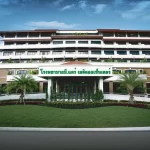Our bodies thrive on blood circulation as that’s how cells, tissues, and body systems derive oxygen to work effectively. But, because we have to deal with various resulting diseases, our sedentary lifestyles have made it difficult for our bodies to stay healthy. Therefore, we have to come up against certain medical issues like varicose veins. Another such disorder is called varicose veins, and this condition is so severe that one in four Americans suffer from it. In extreme cases, it is the swelling of veins in the legs and ankles which can lead to bleeding and ulceration. There are many surprisingly common causes that can result in varicose veins. However, you can start to fix them using sclerotherapy treatments. In this blog, you will know How To Eliminate Varicose Veins With Sclerotherapy Treatments.
What is Sclerotherapy treatments
Sclerotherapy uses very fine, thin needle injections to enhance the cosmetic appearance of spider veins, treat small varicose veins in the legs, and relieve related symptoms such as pain, burning, swelling, and cramps. Usually, each therapy session results in 50% to 80% removal of the injected veins.
How To Prepare for Sclerotherapy
Tell your doctor what medicines you are taking, including herbal supplements. List any allergies, especially to local anesthetics, general anesthesia or materials for contrast. Before your procedure, your doctor may tell you to stop taking aspirin, non-steroidal anti-inflammatory drugs (NSAIDs), or blood thinners.
You may be asked to stop taking supplements that contain iron. Remember to discuss recent illnesses or other medical conditions with your doctor. Also, ask your doctor about antibiotic drugs that you may be taking or ask for safe guidelines to discontinue these drugs. Before or after Sclerotherapy, no lotion should be added to hands.
What To Expect
Often, this operation is performed in outpatient. However, some patients may need admission after the procedure. Ask your doctor if you need to get admission beforehand.
When therapy starts, the interventional radiologist will use a very fine needle to inject the venous-dissolving fluid into the varicose and spider veins. As the treatment progresses, you’ll experience tiny needle sticks and probably a slight sense of burning. The number of veins treated in a single session varies and depends on vein size and location.
In general, the procedure is performed within 30 to 45 minutes.
What You Will Experience
If larger varicose veins are injected you can feel a cramping sensation for one to two minutes. You will be advised to wear cover hosiery or wraps to “compress” the vessels being treated after the procedure.
After a sclerotherapy treatment, you might encounter some side effects. Before resolving, larger injected varicose veins can become lumpy and/or hard for several months. Injection sites that include elevated red areas, and should disappear within a few days. The injection sites will leave brown lines or spots on the skin. They disappear in most cases within three to six months, but about five percent of the time can be permanent. Bruising can occur around the site of the injection and can last for many days or weeks.
Spider veins generally respond to sclerotherapy in 3 to 6 weeks, and larger veins respond in 3 to 4 months. If the veins react to the medication, they won’t appear again. With time, however, new veins may appear, and you may return for additional injections unless necessary.
I am a 26 year old young and witty girl, who simply loves to write and be around her friends. I am the one who believes in filling the heart of her readers with love, passion and contentment.







